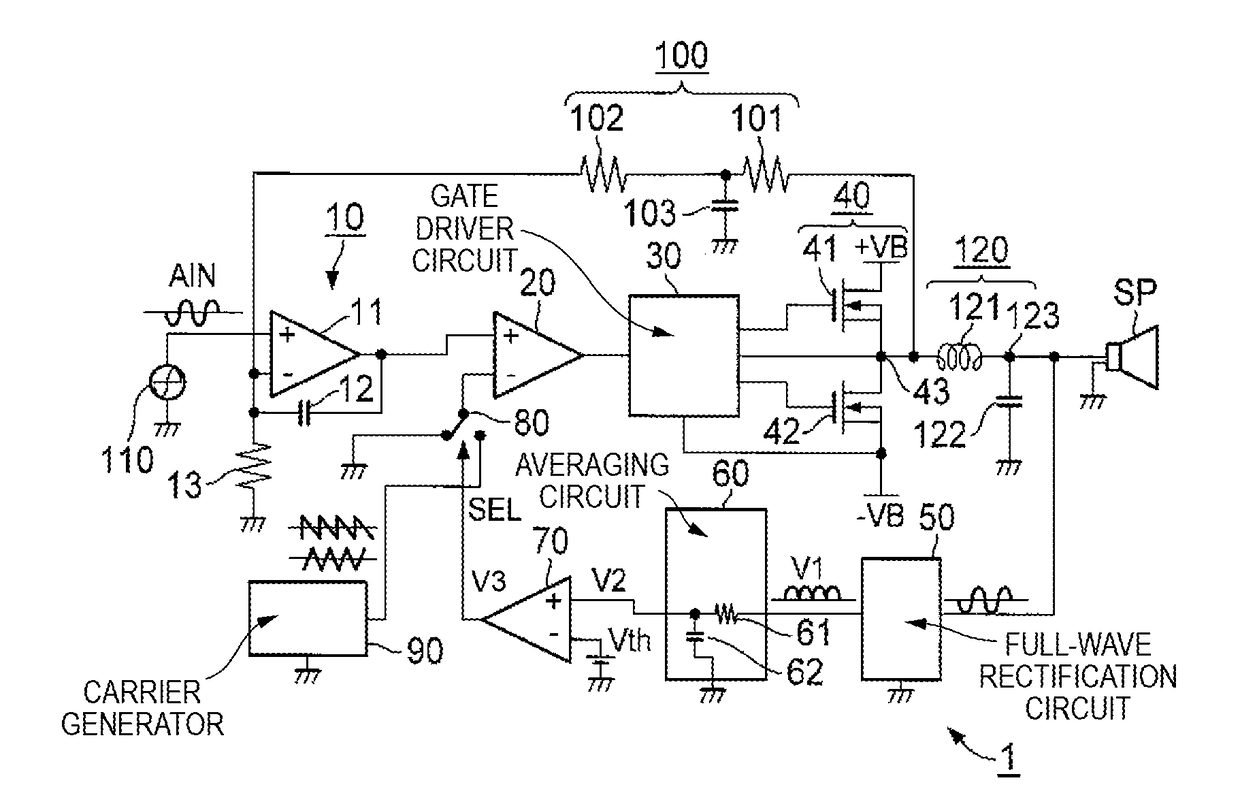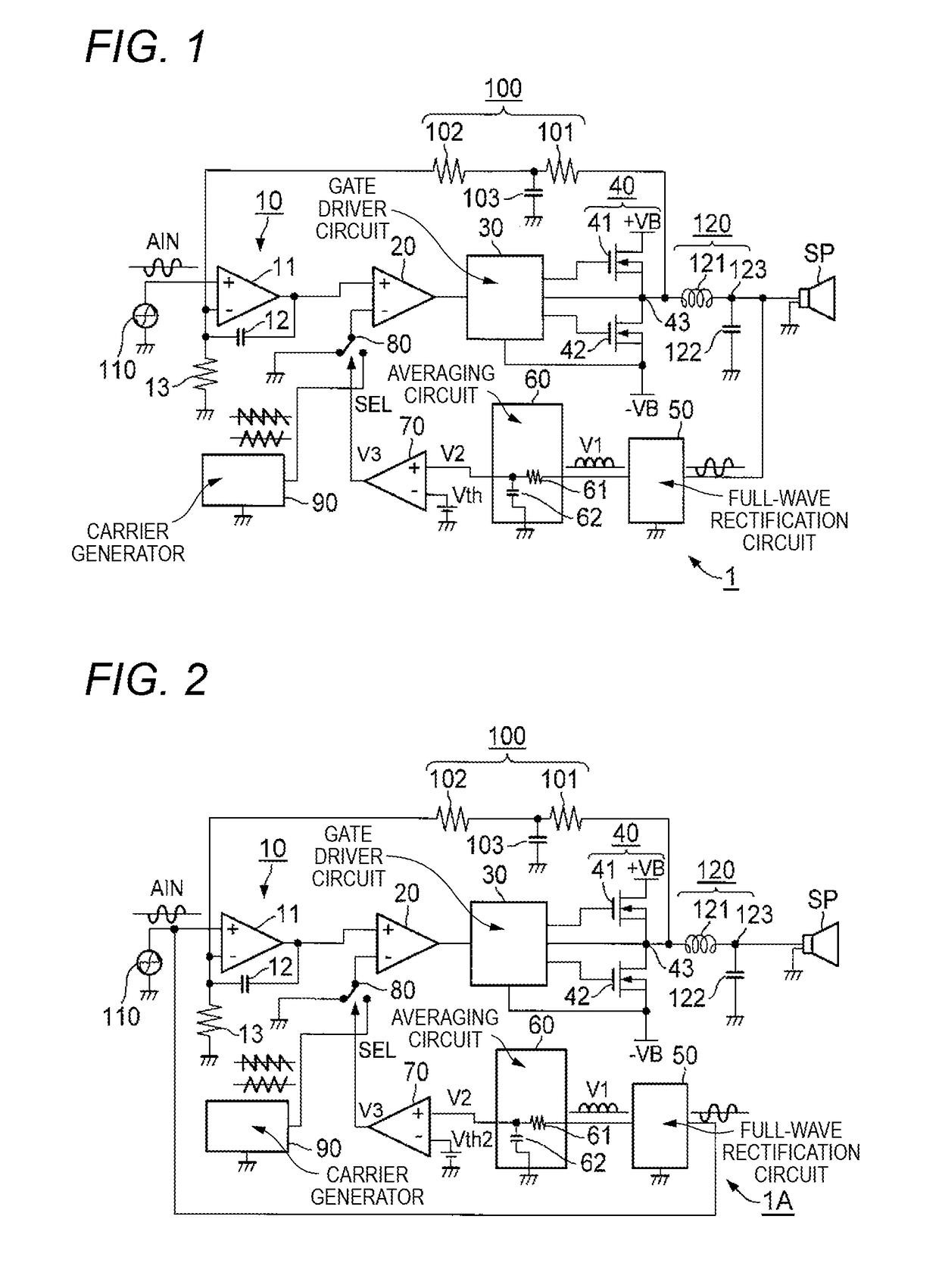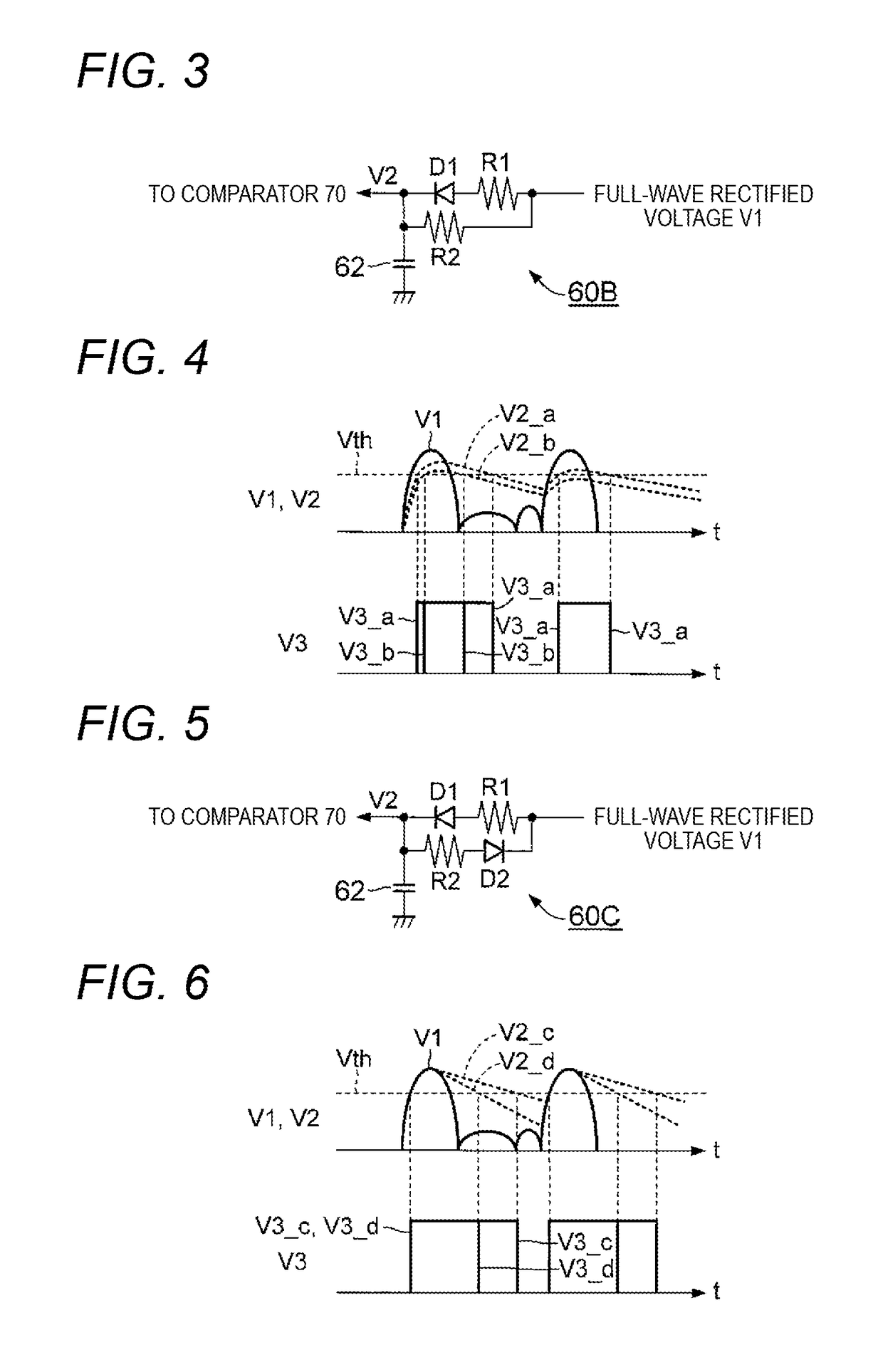Class d amplifier
a class d amplifier and amplifier technology, applied in amplifiers, amplifiers with semiconductor devices/discharge tubes, amplifier modifications to reduce non-linear distortion, etc., can solve the problems of not providing a technology for attaining advantages, not disclosing at all a standard according, and occurrence of beats, so as to reduce switching losses, improve efficiency, and reduce oscillation frequency
- Summary
- Abstract
- Description
- Claims
- Application Information
AI Technical Summary
Benefits of technology
Problems solved by technology
Method used
Image
Examples
first embodiment
[0024]FIG. 1 is a circuit diagram showing a configuration of a class D amplifier 1 according to a first embodiment of this disclosure. In FIG. 1, a speaker SP serving as the load of the class D amplifier 1 and a filter 120 interposed between the class D amplifier 1 and the speaker SP are also shown to facilitate the understanding of the configuration of the class D amplifier 1.
[0025]As shown in FIG. 1, the class D amplifier 1 has an integration amplifier 10, a comparator 20, a gate driver circuit 30, an output stage 40, a full-wave rectification circuit 50, an averaging circuit 60, a comparator 70, a switch 80, a carrier generator 90, and a feedback circuit 100.
[0026]The integration amplifier 10 has an operational amplifier 11, a capacitor 12, and a resistor 13. The input audio signal AIN from an audio signal source 110 is given to the non-inverting input terminal (plus input terminal) of the operational amplifier 11. An integrating capacitor 12 is interposed between the output term...
second embodiment
[0055]FIG. 2 is a circuit diagram showing a configuration of a class D amplifier 1A according to a second embodiment of this disclosure. In the above-mentioned first embodiment, the reference signal generator having the full-wave rectification circuit 50 and the averaging circuit 60 generates the reference signal V2 on the basis of the drive signal for the speaker SP. On the other hand, in the class D amplifier 1A according to this embodiment, the reference signal generator having the full-wave rectification circuit 50 and the averaging circuit 60 generates the reference signal V2 on the basis of the input audio signal AIN. This is because the level of the drive signal for the speaker SP depends on the level of the input audio signal AIN. This embodiment is different from the above-mentioned first embodiment in this respect.
[0056]In this embodiment, the averaging circuit 60 outputs a DC voltage corresponding to the average value of the full-wave rectified voltage V1 of the input aud...
third embodiment
[0058]Next, a third embodiment of this disclosure will be described. In this embodiment, the averaging circuit 60 in the above-mentioned first or second embodiment is replaced with an averaging circuit 60B shown in FIG. 3. This averaging circuit 60B is configured such that the resistor 61 of the averaging circuit 60 (see FIGS. 1 and 2) is replaced with a circuit having a diode D1, a resistor R1 and a resistor R2. As shown in FIG. 3, one terminal of the resistor R1 and one terminal of the resistor R2 are commonly connected, and the full-wave rectified voltage V1 from the full-wave rectification circuit 50 (see FIGS. 1 and 2) is given to this common connection point. The other terminal of the resistor R1 is connected to the anode of the diode D1, and the cathode of the diode D1 and the other terminal of the resistor R2 are commonly connected to an electrode of the capacitor 62 connected to the comparator 70.
[0059]In FIG. 3, in the case that the full-wave rectified voltage V1 is higher...
PUM
 Login to View More
Login to View More Abstract
Description
Claims
Application Information
 Login to View More
Login to View More - R&D
- Intellectual Property
- Life Sciences
- Materials
- Tech Scout
- Unparalleled Data Quality
- Higher Quality Content
- 60% Fewer Hallucinations
Browse by: Latest US Patents, China's latest patents, Technical Efficacy Thesaurus, Application Domain, Technology Topic, Popular Technical Reports.
© 2025 PatSnap. All rights reserved.Legal|Privacy policy|Modern Slavery Act Transparency Statement|Sitemap|About US| Contact US: help@patsnap.com



